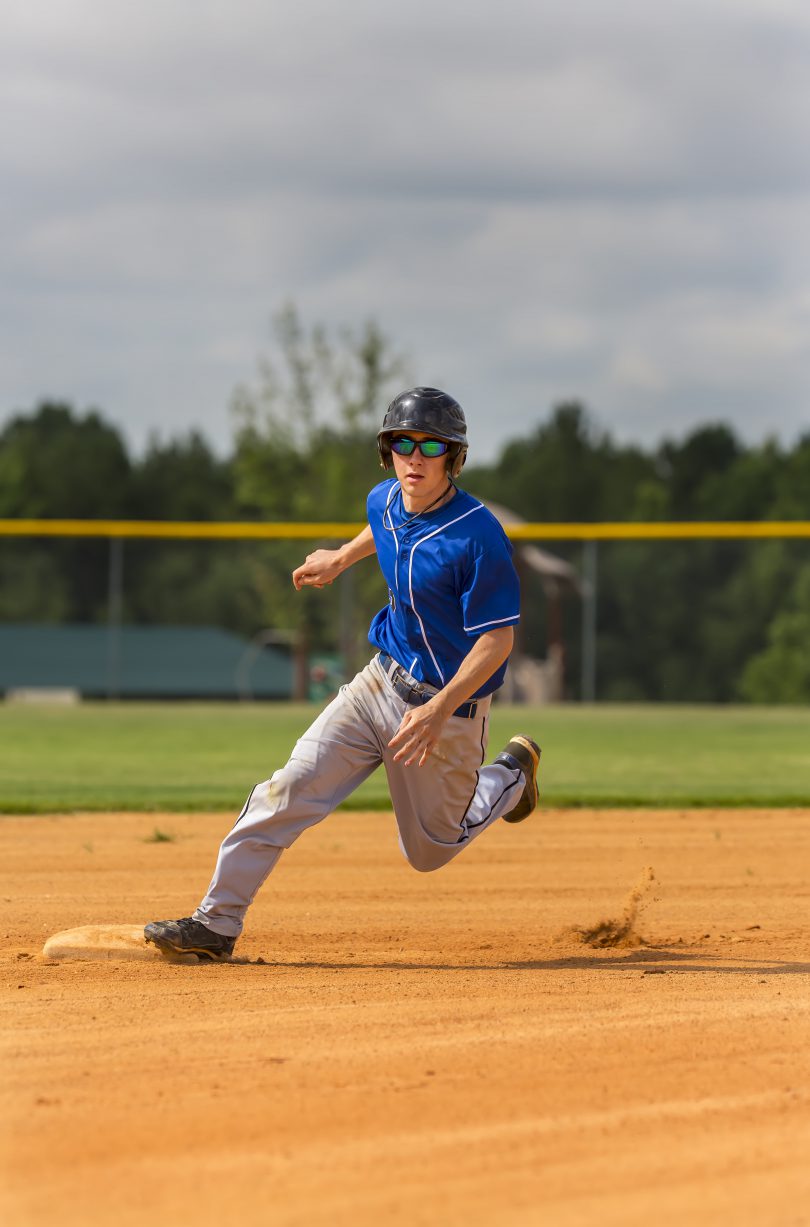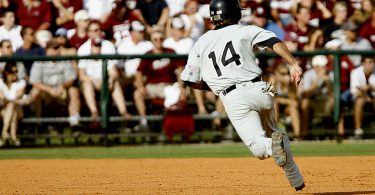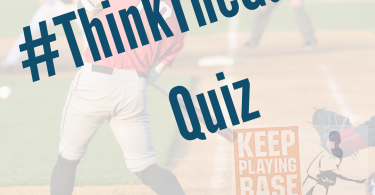The Situation:
There are runners on 1st and 2nd with 2 outs in the 3rd inning of a 2-2 game. The right-handed pitcher has fallen behind the right-handed batter 1-0 in the count as he toes the rubber for the second pitch.
The Play:
The pitcher hums a fastball over the plate and the batter slaps it into right field through the 4 hole. The right fielder charges the ball, moving in and toward the line. He has a shot to get the runner at home, and he takes it, making a strong throw through his cutoff man about head high. The 1st baseman lets the throw go, but it looks like it will be too late. Meanwhile, the runner from first base has slowed up around second to read the throw, waiting to see if it will be cutoff or not. Since the throw is through the cut guy, he is forced to hesitate momentarily. Once he sees the ball is let go by the cutoff man, he heads for third.
The Outcome:
The catcher, seeing that the runner will be safe at home, comes off of his plate to intercept the ball sooner. He makes a clean exchange and whips the ball over to third. The throw is on the money and despite the runner’s nice effort on the slide and ability to narrowly avoid the tag to the back side of third base, the ball beats him and the umpire calls him out.
What Went Wrong:
There’s a lot to dissect here. First, great throw by the outfielder. He is able to ensure that the batter runner doesn’t get to wheel around to second with a strong throw through the cutoff. His accurate throw also allows the catcher to read the play and try to redirect it to third, the only place where an out is possible. That catcher also deserves kudos for recognizing this opportunity, making a clear decision, clean exchange, and strong throw. He gives the umpire a difficult decision to make on a play where he does not have a good view of the slide and tag on the backside of the base from the infield grass. So, hats off to the defensive execution for turning a bad result into a more positive outcome and limiting the damage.
The mistake here is made by the trail runner at first base, who fails to do his homework and think the game before the ball is put in play. The first to third can be a tricky read, especially when you are the trail runner. You definitely don’t want to get thrown out before the run has a chance to score from second and that’s why your pre-pitch homework and knowledge of outfielder angles and arm strength are so important. On this play, the runner has the advantage of angles in his favor, and if he’s done his pre-pitch homework, it’s an easy call. Here’s what we mean:
If the runner at first had been aware of where the right fielder was playing pre-pitch, he would have known that the batted ball would force the right fielder to attack the ball at an angle pulling him away from third base. This means that in addition to the throw to third being longer than the throw to home, the right fielder would also have his momentum carrying him away from third. That makes it an incredibly difficult throw to third base, especially with 2 outs and runners going at the crack of the bat. Given appropriate pre-pitch information, there should be no hesitation on the part of the trail runner, who should head for third without stopping to read the rest of the play. Unless Yasiel Puig is in right field, he is going to cruise to third with no problems and likely no throw. This pre-pitch homework also eliminates the need for the trail runner to look up at the third base coach, who will have his attention focused on waiving or holding the runner up at third. If the trail runner is thinking the game, all he has to do is pick up third and make sure that the runner is being sent home. When he does this, the play is no longer left up to an out of position umpire, and it shouldn’t be close. Now that’s thinking the game.







